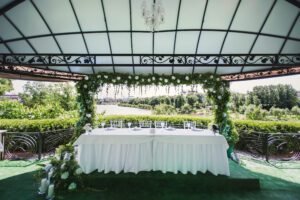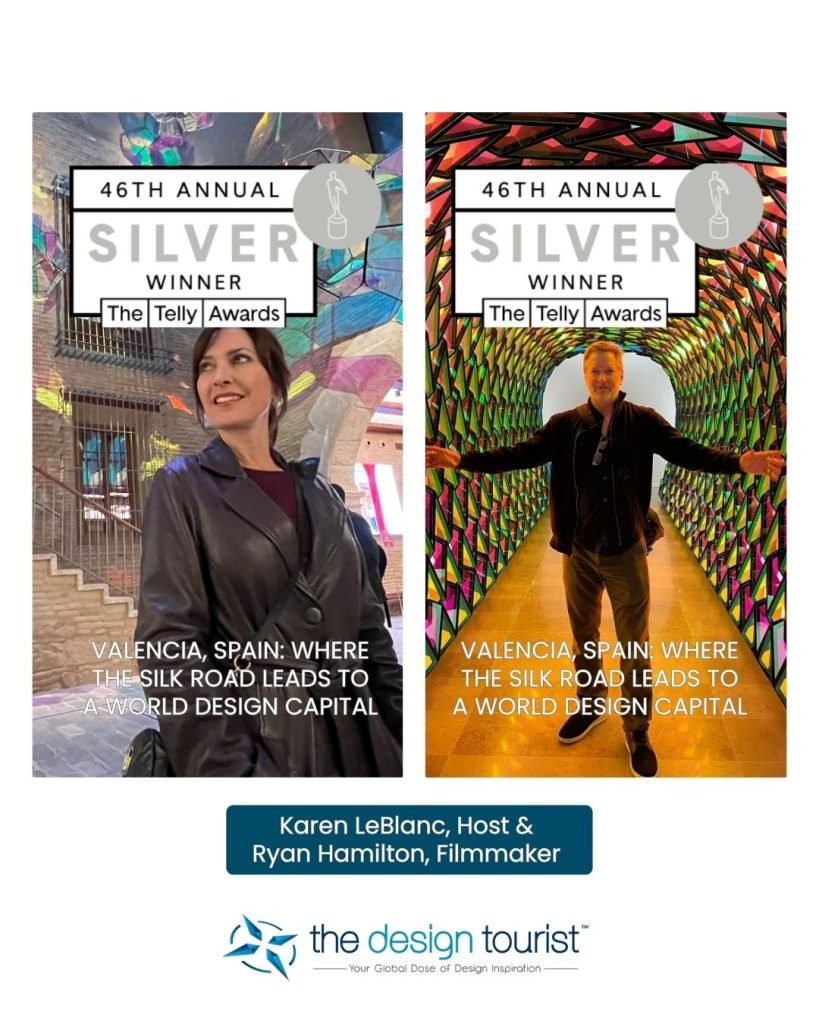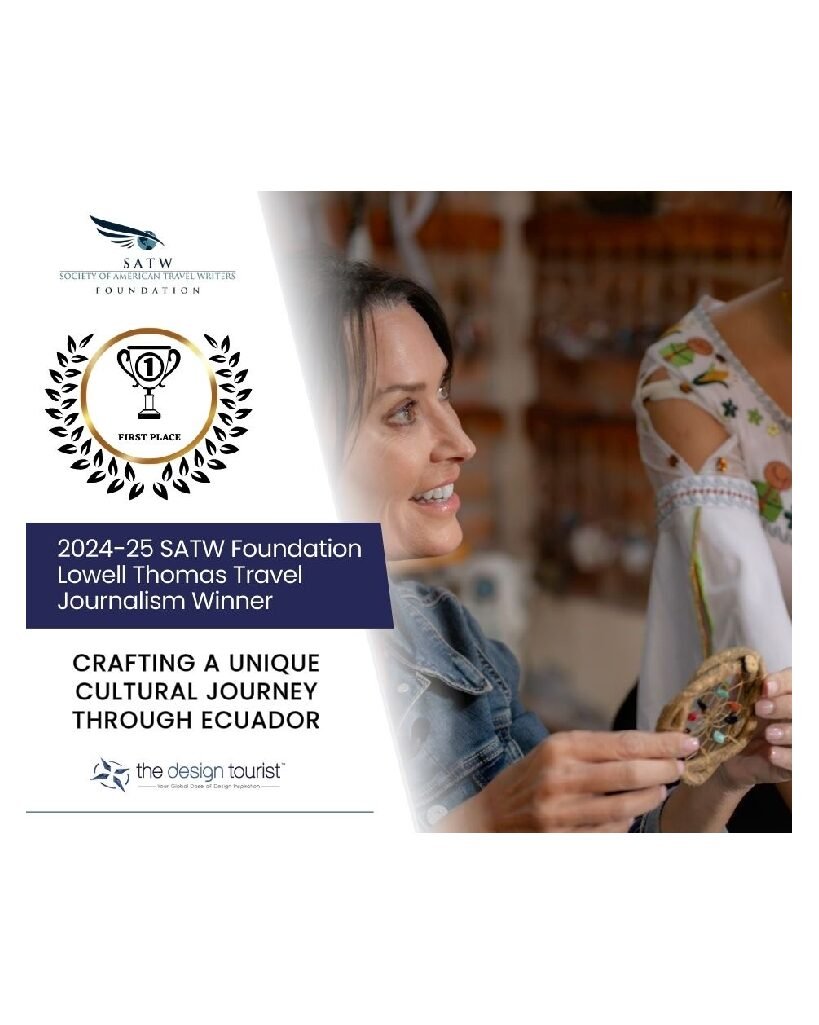This post may contain affiliate links, which means I may earn a small commission from purchased products at no additional cost to you. See my full disclosure here.
Weimar, Germany, is the birthplace of the Bauhaus, an influential school of art, architecture, and design that introduced the world to modernism. The city’s roots as a cultural hub and hometown for literary greats, musicians, and artists provided fertile ground for the Bauhaus movement. For travelers interested in architecture, art, and craft, a visit to Weimar rewards them with historical insight into the hallowed ground of the Bauhaus masters.

A New Era of Design and Architecture of Bauhaus in Weimar
I visited Weimar as part of my journey, retracing the steps of the Bauhaus movement from its beginning in 1919 when the Bauhaus school opened and quickly became the most influential art school of the early 20th century. The political mood in Weimar and progressive-minded citizens were open to this experimental school of thought. It was the aftermath of the First World War, and the establishment of the Weimar Republic in 1919 gave Germany its first democracy.

The Bauhaus Curriculum
The Bauhaus translates as the School of Building, and its teachings became a style and a philosophy. The Bauhaus school began when Henry Van de Velde founded an art school in Weimar in 1919 as an interdisciplinary curriculum focused less on theory and more on hands-on workshops. Start your exploration of Weimar with a visit to The Museum of New Weimar to gain historical perspective and context.

The Museum of New Weimar holds a collection of art, furniture, and design objects that are predecessors of the Bauhaus. The museum chronicles the evolution of Weimar Modernism, starting with Count Harry Kessler, the museum’s original director. He filled it with modern art of the times to propel this idea of a progressive Weimar. Some thought he took it too far with the acquisition and display of these nude paintings that, created a career-ending scandal.

Kessler appointed Henry van de Velde as the new Weimar School of Arts & Crafts director fostering a liberal, creative climate. Henry Van de Velde later appointed Walter Gropius head of the fledgling Bauhaus School. Walter Gropius merged the academy of fine arts and applied arts into one institution called the “State Bauhaus.”

Influential Figures of Bauhaus
He hired as the first faculty member American artist Lyonel Feiniger, whose use of intersecting planes of color and techniques at Bauhaus brought new compositions. Soon, the Bauhaus’ revolutionary ideas attracted European visionaries and artists, including Paul Klee, Oskar Schlemmer, and Wassily Kandinsky.

“At the turn of the 20th century, citizens were against historicism and looking to the future. They wanted a new way to express themselves not connected to Medieval times. As we moved into the Industrial age, society demanded a new art form and way of expression,” explains my guide, Claudia von der Heyde. The museum tells the story of Friedrich Nietzsche, a great thinker and philosopher whose ideas influenced Bauhaus.

Next to the museum lies the Gauforum, a complex of government buildings spanning two dictatorships. From the square, you can see the high rises of the German Democratic Republic (socialist ideals) and the Nazi horizontal buildings. The highest-ranking Nazi lived in Weimar and oversaw all the forced labor camps, including the notorious Buchenwald concentration camp outside the city. The Nazi administrative buildings went up during the National Socialist dictatorship from 1937 to 1945, when World War Two ended with Germany’s defeat. The high-rise buildings appeared in 1949 when Russia developed the New East German State named the GDR and took over most private businesses.

The next logical stop along my Bauhaus trek is the Bauhaus Museum, Weimar, which opened in 2019, commemorating the 100th anniversary of the Bauhaus School.

Walter Gropius collected and curated the Bauhaus objects on display, the oldest Bauhaus collection in the world.

The museum’s cube architecture exudes Bauhaus curb appeal with 24 horizontal LED lines that glow at dusk. Exhibits tell the Bauhaus story thematically rather than chronologically.

A visit to the Bauhaus-Universität Weimar offers insight into present-day iterations of Bauhaus teachings.

The working university attracts prospective architects, civil engineers, and artists who come to earn degrees rooted in Bauhaus ideals. Bauhaus University holds two significant Bauhaus buildings on the UNESCO World Heritage List, the main building of campus and the Van de Velde building. I recommend signing up for one of the student-guided campus tours to explore its historic buildings.

Architect Henry Van De Velde designed most campus buildings between 1904 and 1911, so you won’t see much Bauhaus architecture.

The Van de Velde building, with its striking gable on the facade, is the former home of the Bauhaus School of Applied Arts with workshops.

In this building, a winding stairway showcases a mural of human figures by Oskar Schlemmer, a Bauhaus instructor, one of the Bauhaus’ first artists labeled a degenerate artist by the Nazis.

Walter Gropius and the Visionary Beginnings of Bauhaus
The former office of Walter Gropius is the main attraction on campus. Gropius designed his office as a total concept of art. He created the office as a cube with cube geometry echoed in the furniture. Throughout the walls and halls, Bauhaus murals depict works by masters, including the Bauhaus logo by artist Herbert Bayer, a red square, a blue circle, and a yellow triangle.
In 1923, the Bauhaus school held a public exhibition of its works and accomplishments, including its prototype home, The Haus Am Horn. Despite Weimar’s reputation as the cradle of modernism, the House of Horn Bach is the city’s only Bauhaus building.
During my visit to Weimar, I stayed at the Elephant Hotel, a gorgeous building deeply rooted in the city’s cultural fabric and a witness to many pivotal historical moments.

The hotel served as a communal living room and accommodations for intellectuals, poets, writers, artists, musicians, and politicians, including Bauhaus masters, Gropius, Feininger, and Kandinsky.

Elephant Hotel resides on the former site of a restaurant and guesthouse called Zum Elephant, which opened in 1696. The hotel’s name dates back to the middle ages, when people could not read or write, so they relied on symbols to navigate the world. The owner chose the elephant because it was exotic and large.

The Elephant Hotel was Hitler’s favorite place to stay in Weimar and served as the Nazi Party headquarters until 1933. At the time, the state of Thuringia was friendly to Hitler. He could speak publically and openly, so it became an operational base for the Nazi party. When visiting Weimar, Hitler would often stay in a balcony room overlooking the town square and appear on the balcony to the chanting crowds below. Today, it’s known as the Thomas Mann suite, the hotel’s largest room overlooking the city square and marketplace. Later, Hitler had his apartment in the hotel.

In 1925, The Bauhaus School left Weimar, forced out by funding cuts and the conservative politics of the Thuringian state government. Teachers and students relocated to Dessau, my next stop on my Bauhaus tour of Germany.

Most Bauhaus architecture resides in Dessau and Berlin, where the Bauhaus school relocated before closing in 1933. Dessau holds the world’s largest concentration of Bauhaus architecture. Bauhaus professors Walter Gropius, Hannes Meyer, Lazlo MoholyNagy, and Wassily Kandinsky all worked in Dessau, developing a modernist architectural language.
A Lasting Influence on Modernism of The Bauhaus
Bauhaus only existed for 14 years, but its ideas continue to influence art, architecture, and design. Many Bauhaus teachers and students emigrated because of the National Socialist dictatorship, spreading their modernist ideals. The aesthetics of the Bauhaus echo today in everything from architecture to home products and furnishings.

There is another side of the city to explore, known as Classical Weimar, encompassing 13 sites, including the homes of Germany’s most celebrated poets, Johann Wolfgang von Goethe and Friedrich von Schiller. Weimar is a UNESCO World Heritage destination home to great thinkers, artists, writers, and musicians Johann Sebastian Bach and Franz Liszt.

During the 18th century, Weimar emerged as a cultural center of Germany. During that time, Goethe came to Weimar to be the National Poet upon invitation by the court. Goethe’s most famous work of German literature is Faust, a story focused on the human vices of obsession with youth, egotism, manipulation, temptation, and seduction.

The German National Theatre Weimar, a world-renowned performance venue, is where politicians drafted the Republic’s constitution establishing the Weimar Republic, a period in German history from 1919-1933. The statutes of both famous poets, Goethe and Schiller, overlook the theater square in front of the German National Theater.

On August 13, 1961, The Communist government of the Germany Democratic Republic, or GDR, built a wall separating East and West Berlin, starting the Cold War. The state of Thuringia was closed to Western Tourists until the fall of the Berlin Wall.
To learn and experience more of Weimar as the birthplace of the Bauhaus, watch my episode of The Design Tourist featuring the places and people of this 20th-century school of art, architecture, and design that continues to influence present-day Modernism in all forms.
What to know if you go:
Download the Weimar+ app as a digital guide to the city’s main attractions, including museums and historical sites.
The German National Tourist Board is a great resource for researching and planning your trip. I recommend starting there to learn about all Germany has to offer.
Here’s my takeaway:
Travel opens my mind and my heart to other ways of being and seeing the world. My visit to Weimar provoked conflicting emotions. There were so many moments of beauty that sparked joy, yet there is the dark side of Weimar’s past—the city’s Nazi connections that coexist alongside Weimar’s cultural achievements. The people of Weimar are resilient, having persevered through war, Nazi infiltration, Communist rule, closed borders, and the government’s appropriation of private businesses. Through it all, Weimar continues to preserve and promote a mindset, a movement, and a cultural legacy that propels ideals resonating today in art, architecture, and design.
Explore More of Germany’s Hidden Gems:


































